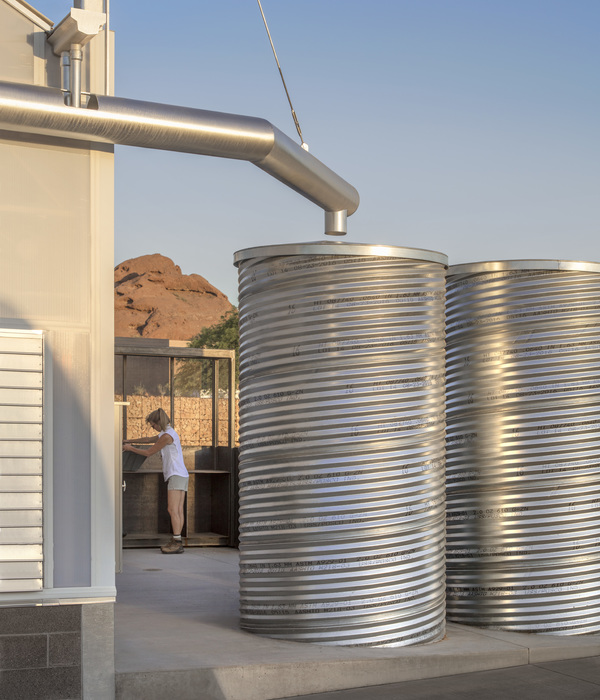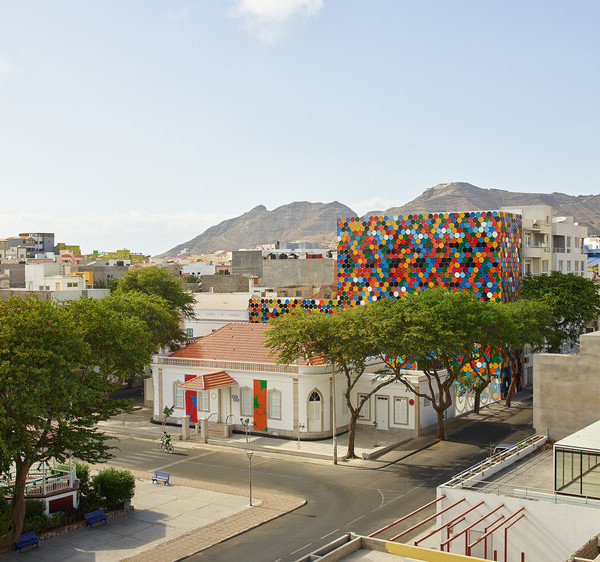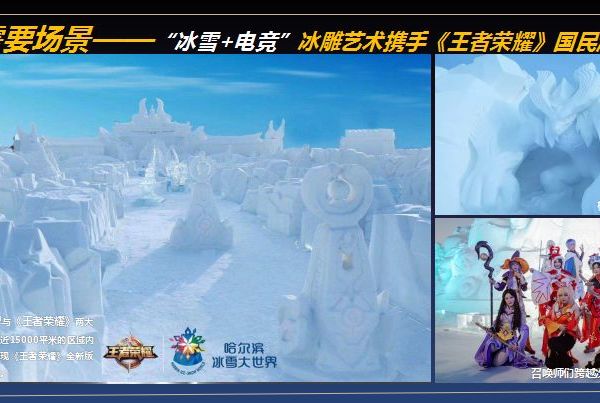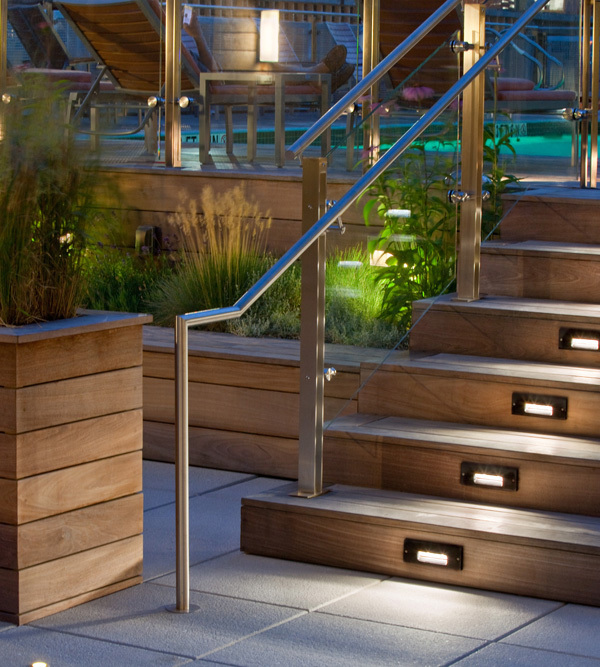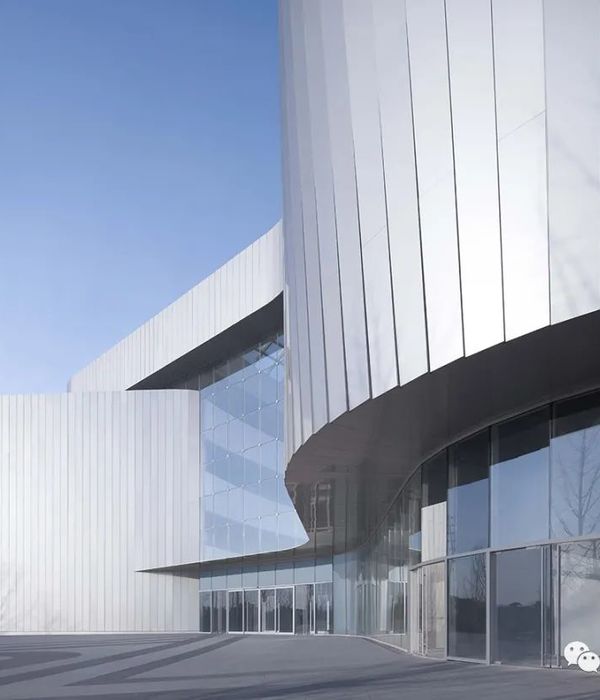- 项目名称:蜂巢 (The Hive)
- 完成年份:2015年
- 结构工程:Simmonds Studio
- 照明顾问:Andy Coates
Wolfgang Buttress:日前,曾荣获多个奖项的雕塑作品“蜂巢”将从2015年米兰世博会的英国馆移至英国皇家植物园(2016年6月)。为了响应世博会“润养大地,泽给苍生”的主题,该展馆展现了蜜蜂数量的下降和授粉给我们食物链带来的深刻影响。在6个月的展览期间,蜂巢共吸引了超过330万的游客,成为了全球最受欢迎的英国付费景点,并成为2015年英国十大景点之一。从概念设计到拥有“第二次生命”,蜂巢将是第一个从世博会返回英国的展馆,让英国公众有机会体验并享受它。
Wolfgang Buttress:We are delighted to announce that ‘The Hive’ a multiple award-winning sculpture will be relocated to Kew Gardens (June, 2016) from the World Expo, Milan 2015 where it took centre stage as part of the UK Pavilion. Responding to the Expo theme ‘Feeding the Planet, Energy for Life’ the Pavilion highlights the decline of honey bee populations and importance of pollination in our food chain. The Hive was experienced by over 3.3million visitors over a 6-month period, making it the most popular British paid attraction worldwide and within the top ten UK attractions of 2015. Designed from concept to have a ‘second life’ The Hive will be the first UK pavilion to return back from a World Expo for the British public to experience and enjoy.
蜂巢装置由艺术家Wolfgang Buttress与结构工程师西蒙兹工作室、诺丁汉特伦特大学物理学家马丁·本西克博士合作设计,由英国公司Stage One制造。建筑师BDP则与Wolfgang Buttress合作,创造一个沉浸式的野花草地景观,让游客在通向“蜂巢”的过程中产生一种旅行感。
The Hive sculpture was designed by artist Wolfgang Buttress working in collaboration with structural engineers Simmonds Studio, physicist Dr Martin Bencsik of Nottingham Trent University, and was manufactured in the UK by Stage One. Architects BDP are working alongside Wolfgang Buttress to create an immersive wild flower meadow and landscape that will engage the visitor creating a sense of journey leading to ‘the Hive’.
▼装置细节 Detail
该装置是一个蜂巢的抽象类似物,其结构中的旋转扭曲形成的动态,使人联想到蜂群。装置整体轮廓是一个立于柱子上的14米立方体,看上去好像悬浮于草地之上,游客可以进入其中心镂空的球形空间,也可以走在雕塑下面,透过玻璃地板窥视内部。
The Hive is an abstracted analogue of a honeycomb. A rotational twist in the structure introduces movement, suggestive of a swarm. The form is a 14m cube raised-up on columns, appearing almost to hover above the meadow. A spherical void hollowed from the centre, allows visitors to enter. Walking beneath the sculpture, visitors may peer up through the glass floor into the interior.
装置中的振动传感器可用来测量生活在Kew附近的真实蜂群的行为活动,向排列在蜂巢内部的1000个LED光源发送实时信号,再通过计算机编程将这些振动信号转换成灯光效果,使蜂巢能够通过视觉表现传达出蜜蜂的群体状态。这种视觉体验是在预先录制的蜜蜂声音的声景基础上,加以补充音乐家们的合奏精心制作而成。
Accelerometers (vibration sensors) are used to measure the activity of a real bee colony living at Kew, feeding live signals to 1000 LED luminaires which line the interior of the Hive. Algorithms are used to convert these vibrational signals into lighting effects, allowing the Hive to convey a visual representation of the state of the colony. This visual experience is complemented by a soundscape based upon pre-recorded bee sounds and harmonious stems crafted by an ensemble of musicians.
该蜂巢装置代表了蜜蜂和人类之间存在的内在重要关系,并通过一种身临其境的多感官体验,将艺术、科学、声音和景观融为一体。
The Hive represents the intrinsic and important relationship between bee and human bringing together art, science, sound and landscape through an immersive and multi-sensory experience.
▼装置效果图 Perspective
▼装置平面图 Master Plan
▼场地剖面图 Site Section
▼装置正立面 Hive Elevation-Front
▼装置剖面图 Hive Section
▼装置平面 Hive Plan
© Wolfgang Buttress
项目名称:蜂巢 项目地点:意大利 米兰(2015);英国皇家植物园(2016年6月后) 完成年份:2015年
团队名单
艺术家/创意总监:Wolfgang Buttress
结构工程:Simmonds Studio
物理学家和蜜蜂专家:Martin Bencsik博士
建筑和景观设计:BDP
视听设计:Squint / Opera
承包商:Stage One
照明顾问:Andy Coates
声学工程:Hoare Lea
Project name: The Hive Location: Milan, Italy(2015); England(after June 2016) Completion: 2015
Team List
Artist / Creative Lead: Wolfgang Buttress
Structural Engineer: Simmonds Studio
Physicist and Bee Expert: Dr Martin Bencsik
Architects & Landscape Architects: BDP
Audio-visual design: Squint / Opera
Contractor: Stage One
Lighting Consultant: Andy Coates
Acoustic Engineer: Hoare Lea
{{item.text_origin}}

